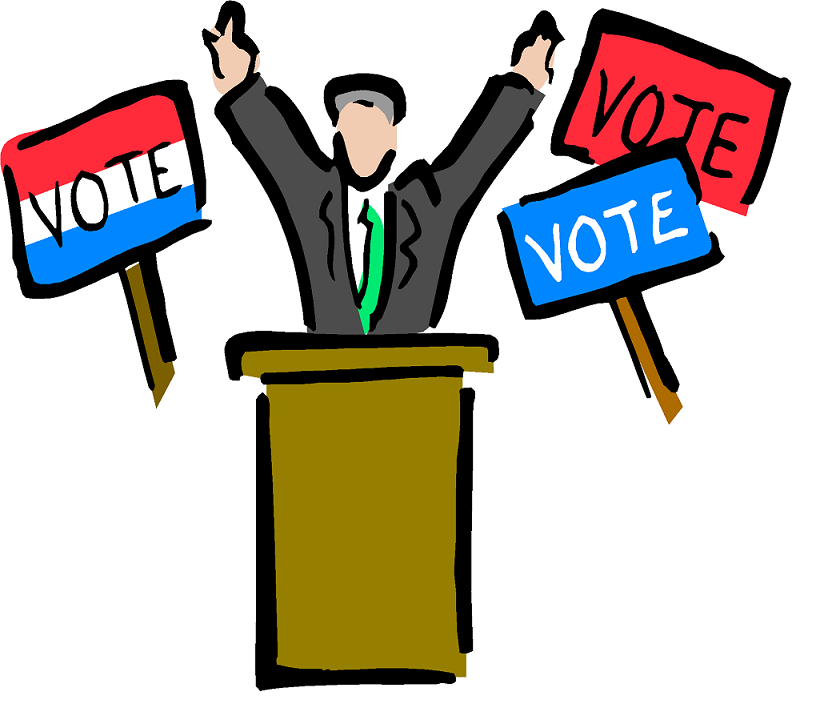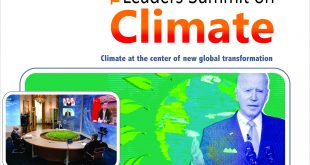The Rise of Populism in Asia
Need to strengthen democratic institutions’ resilience
M. Sheraz
The populist wave that has swept the world during the recent years has shaken up global politics, sending many establishment-politicians heads spinning. Much of the focus of this surge has been in the western hemisphere, with the rise of Trump, recently Brazil’s Jair Bolsonaro, and most recently Boris Johnson in the United Kingdom, along with bubbling populism across Europe. But Asia is far from immune. A recent study titled “Populists in Power Around the World” from the Institute for Global Change found 40 percent of Asia’s population is governed by populists. A startling figure until you realise the continent is home to two of the top three most populous democracies in the world ruled by populists: Narendra Modi in India, and Joko “Jokowi” Widodo in Indonesia. Add to that the Philippines under the presidency of Rodrigo Duterte, and it accounts for over 1.7 billion people.
The wave of modern populism has dramatically shaken the European Union (EU) and the United States (US) during the last few years. The year 2016 was an annus horribilis and heralded a new reality of post-truth politics. It included Brexit, the refugee crisis, the fear of Islamist terrorism with numerous and continuing attacks, the rise of right- wing populist parties and, more generally, authoritarian developments on a global scale. This rise of populism has been the subject of countless discussions, and for good reason: populists’ misguided policies often have severely adverse political and economic consequences. Now, those risks are coming to Asia.
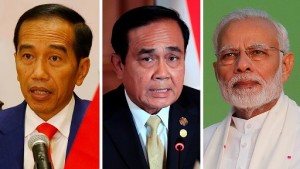 There is no straightforward definition of populism. It may be ideological, economic, social, or cultural. It may reflect left-wing or right-wing views. And it is often interpreted in a country-specific context. It is neither a bare style of communication (in the sense of popular) nor a rigid ideology (in the sense of socialism, liberalism, conservatism or even fascism). Its nature is multi-dimensional: technical (as a political style in the anti-elite attitude of “us against them”), content (with the focus on specific themes), medial (special resonance and interaction) and personal (importance of charisma). Anyone who wants to understand the interregional concept of populism must approach it through antagonism. A reasonable definition will then result: Populism can be either inclusive or exclusive, carried out from “below” or “above” and forced.
There is no straightforward definition of populism. It may be ideological, economic, social, or cultural. It may reflect left-wing or right-wing views. And it is often interpreted in a country-specific context. It is neither a bare style of communication (in the sense of popular) nor a rigid ideology (in the sense of socialism, liberalism, conservatism or even fascism). Its nature is multi-dimensional: technical (as a political style in the anti-elite attitude of “us against them”), content (with the focus on specific themes), medial (special resonance and interaction) and personal (importance of charisma). Anyone who wants to understand the interregional concept of populism must approach it through antagonism. A reasonable definition will then result: Populism can be either inclusive or exclusive, carried out from “below” or “above” and forced.
The term populism has particular relevance in connection with political and media discourse. Its various iterations tend to share common features. Populist parties are typically led by a charismatic individual, who pits “the corrupt elite” and “outsiders” against “the people,” whose true will the populist purports to represent. This approach is most effective at times when the public is deeply frustrated with established leaders or political parties, owing to deepening economic and social disparities, rising insecurity, or overt corruption.
What populism has to offer is orientation, as it is a movement that “personalises” the solution to problems. Populism is a chameleon, adopting the colours of its environment. Donald Trump’s presidential inauguration speech can be regarded as a role model for the populist appeal: “Today’s ceremony, however, has a very special meaning. Because today, we are not merely transferring power from one administration to another or from one party to another. But we are transferring power from Washington, D.C., and giving it back to you, the people…”
Once in power, however, populists end up making matters much worse. For starters, they frequently undermine the fundamental institutions of representative democracy, including the systems of checks and balances that restrain institutional excesses and prevent abuses of power. They claim that these institutions impede their ability to serve “the people.”
In Latin America, Bolivia’s Evo Morales, Colombia’s Álvaro Uribe, and Venezuela’s Hugo Chávez used referenda to implement major constitutional reforms that extended presidential term limits and constrained opposition parties, the judiciary, and media. As a result, rule of law and institutional quality deteriorated.
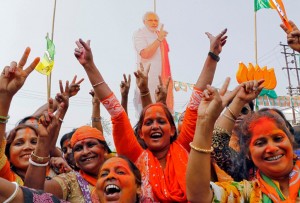 Populists’ economic track records are similarly grim. A populist economic policy, according to the economists Rudi Dornbusch and Sebastián Edwards, mostly “emphasises growth and income distribution,” without regard for “the risks of inflation and deficit finance, external constraints, and the reaction of economic agents to aggressive nonmarket policies.” It thus leads to weakening investment, economic efficiency, and productivity growth—trends that hurt the majority in the long run. The economic crises that many Latin American countries experienced in the 1970s and 1980s resulted from this dynamic.
Populists’ economic track records are similarly grim. A populist economic policy, according to the economists Rudi Dornbusch and Sebastián Edwards, mostly “emphasises growth and income distribution,” without regard for “the risks of inflation and deficit finance, external constraints, and the reaction of economic agents to aggressive nonmarket policies.” It thus leads to weakening investment, economic efficiency, and productivity growth—trends that hurt the majority in the long run. The economic crises that many Latin American countries experienced in the 1970s and 1980s resulted from this dynamic.
Although today’s populists are not pursuing wildly expansionary macroeconomic policies, they still rely on fiscal stimulus and government intervention in markets. For example, while US President Donald Trump preaches fiscal discipline, the combination of higher spending and lower revenues (owing especially to the massive tax cut for corporations enacted in 2017) is blowing up the federal budget deficit. Likewise, Trump advocates protectionist trade policies.
And yet, despite the damage populists have done in the West, Asian voters are increasingly falling victim to their blandishments. India’s Narendra Modi, Indonesia’s Joko Widodo, and the Philippines’ Rodrigo Duterte can attest to that.
To be sure, populism is not a new phenomenon for Asia. In the Philippines, Joseph Estrada won the 1998 presidential election by presenting himself as a defender of the poor—an image that was buttressed by his acting experience playing heroes of the lower classes. But while he did implement extensive poverty-reduction programmes, most of them had little impact, not least because they were weighed down by pork-barrel politics.
Similarly, Thaksin Shinawatra, a self-made telecommunications mogul, became Thailand’s prime minister in 2001, thanks to his carefully cultivated image as one of “the people,” especially the rural poor. Once in power, he, too, implemented pro-poor policies, including universal healthcare; but design flaws led to surging deficits and low-quality services. Facing a raft of corruption charges, he was ousted by the military in 2006. And yet he remains highly popular among Thailand’s poor.
But it is primarily cultural grievances that are driving support for today’s crop of Asian populists. As Dani Rodrik has observed, in parts of Europe and the United States, powerful cultural trends—such as urbanisation and “post-materialism” (the embrace of secularism, personal autonomy, and diversity)—are making older, socially conservative people feel like strangers in their own land.
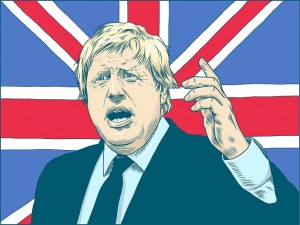 This sense fuels support for populists, for whom “the people” are members of a native group, who must be defended against an out-group of immigrants, criminals, ethnic and religious minorities, and cosmopolitan elites. Concepts like religious traditionalism, law and order, and national sovereignty provide a useful pretext for discriminatory policies, like Trump’s (legally dubious) immigration crackdown.
This sense fuels support for populists, for whom “the people” are members of a native group, who must be defended against an out-group of immigrants, criminals, ethnic and religious minorities, and cosmopolitan elites. Concepts like religious traditionalism, law and order, and national sovereignty provide a useful pretext for discriminatory policies, like Trump’s (legally dubious) immigration crackdown.
It is this type of cultural populism that has taken hold in Asia. Duterte sustains his popularity by casting criminals as enemies of the people. And, because enemies must be eliminated, extrajudicial killings of suspected drug users and dealers—nearly 5,000 at the hands of law enforcement from July 1, 2016 to September 30, 2018—strengthen law and order. Modi’s Hindu nationalism enabled his Bharatiya Janata Party to increase its parliamentary majority in this spring’s elections, despite his government’s failure to fulfil its promises to voters.
Now, northeast Asia is being swept up by the populist tide. South Korean President Moon Jae-in was elected in 2017 by voters disgusted with the political establishment’s collusion with business elites and failure to respond to their needs. His administration has pursued populist economic policies, including sharp increases in the minimum wage and social welfare expenditures.
A recent Asian Barometer Survey shows that citizens in Hong Kong and Taiwan, like those in South Korea, harbour high levels of anti-establishment sentiment and frustration with economic inequality. Conditions are thus ripe for populism to flourish.
To mitigate the populist risk, responsible Asian leaders must work to strengthen democratic institutions’ resilience against potential disrupters, while ensuring that voters are informed about populism’s dismal track record. Most importantly, they must take the wind out of the populists’ sails by pursuing economic-development strategies focused on inclusive growth. Only by credibly addressing citizens’ economic grievances can Asian leaders prevent their countries from falling prey to false promises and exploitation of cultural insecurities.
Populists in Power Around the World
Executive Summary
Populism is dramatically shifting the global political landscape. This report defines populism and identifies its global prevalence by introducing a global database “Populists in Power: 1990–2018”.
Populism contains two primary claims:
A country’s ‘true people’ are locked into conflict with outsiders, including establishment elites.
Nothing should constrain the will of the true people.
Although populism always shares these two essential claims, it can take on widely varying forms across contexts. This report identifies three types of populism, distinguished by how populist leaders frame the conflict between the ‘true people’ and outsiders:
Cultural populism claims that the true people are the native members of the nation-state, and outsiders can include immigrants, criminals, ethnic and religious minorities, and cosmopolitan elites. Cultural populism tends to emphasise religious traditionalism, law and order, sovereignty, and painting migrants as enemies.
Socio-economic populism claims that the true people are honest, hard-working members of the working class, and outsiders can include big business, capital owners and actors perceived as propping up an international capitalist system.
Anti-establishment populism paints the true people as hard-working victims of a state run by special interests and outsiders as political elites. Although all forms of populism rail against political elites, anti-establishment populism distinguishes itself by focusing on establishment elites as the primary enemy of the people and does not sow as many intra-society divisions.
The report identifies 46 populist leaders or political parties that have held executive office across 33 countries between 1990 and today. It finds that:
Between 1990 and 2018, the number of populists in power around the world has increased a remarkable fivefold, from four to 20. This includes countries not only in Latin America and in Eastern and Central Europe—where populism has traditionally been most prevalent—but also in Asia and in Western Europe.
Whereas populism was once found primarily in emerging democracies, populists are increasingly gaining power in systemically important countries.
Anti-establishment populism was once most prevalent, but cultural populism is now the commonest form of populism across the globe.
Rise of Populism
The term “populism” was first used to describe specific 19th-century political movements. The first was the agrarian movement in the US in the 1890s that eventually became the People’s Party. The movement was formed to oppose the demonetisation of silver and championed scepticism of railways, banks and political elites. They adopted the moniker “Populists” from the Latin populus (the people), and their message was to “get rid of ‘the plutocrats, the aristocrats, and all the other rats’, install the people in power, and all would be well”.
The second movement attached early on to the term populism was the Russian Narodnichestvo of the 1860s and 1870s, a movement of revolutionary students and intellectuals who idealised rural peasants and believed that they should form the basis of a revolution to overturn tsarist rule. These movements were parallel—despite vast differences in context—in their belief that power belonged with agrarian workers rather than with the urban elite.
It was not until the 1950s that populism came into broader use. It became attached to phenomena as varied as political movements supporting charismatic leaders in Latin America (for example, Juan Perón in Argentina or Getúlio Vargas in Brazil), military coups in Africa championing social revolution (such as Jerry Rawlings in Ghana) and McCarthyism in the US. A prominent theme in this early literature was to see populism as a reaction to modernisation. Seymour Martin Lipset, a leading modernisation theorist, explained populism as a political expression of the anxieties and anger of those wishing to return to a simpler, pre-modern life.
 Jahangir's World Times First Comprehensive Magazine for students/teachers of competitive exams and general readers as well.
Jahangir's World Times First Comprehensive Magazine for students/teachers of competitive exams and general readers as well.
